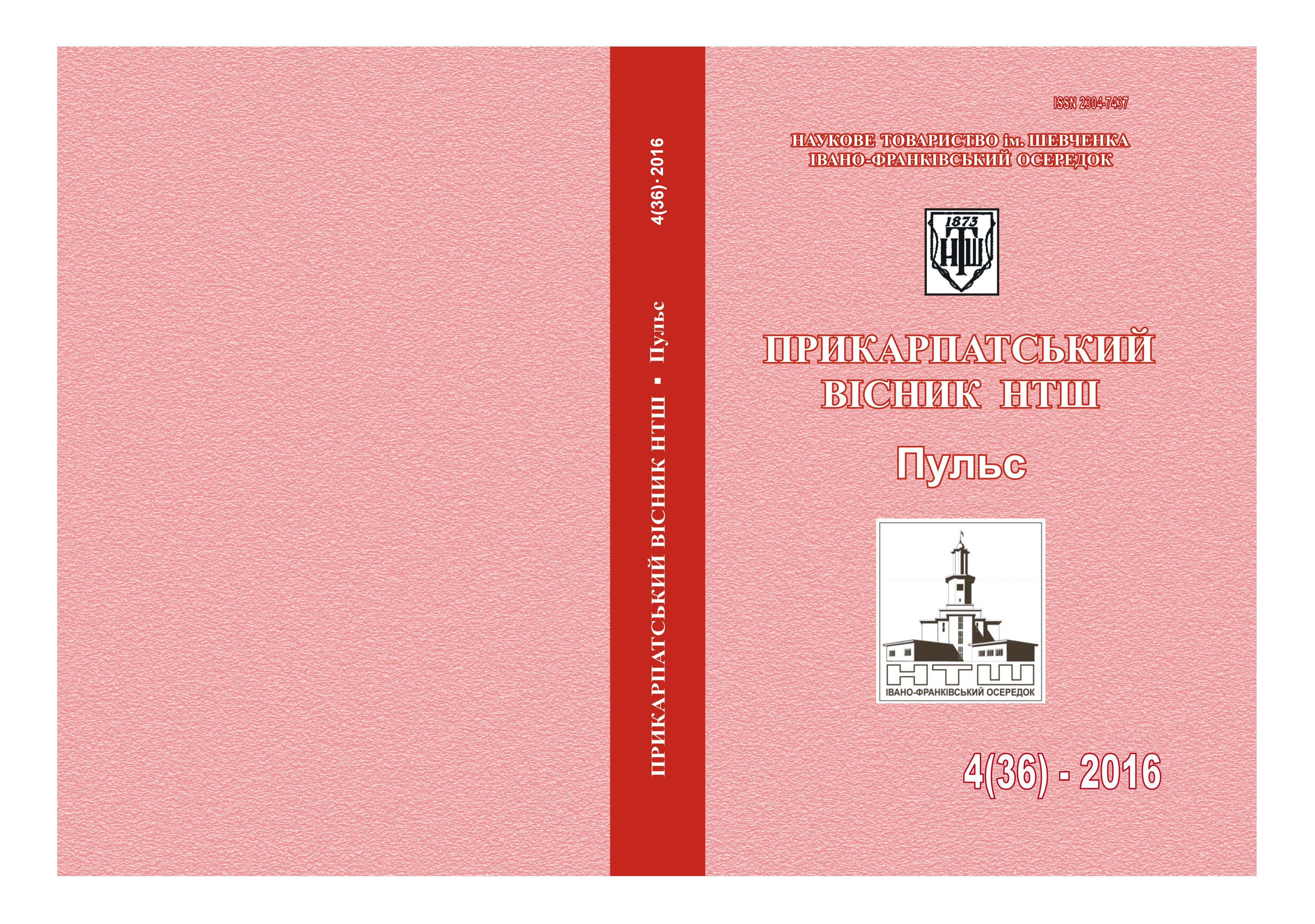THE PATHOGENETIC JUSTIFICATION OF METAL-ENZYMES HOMEOSTASIS IN COMMISSURE FORMATION DURING PERITONITIS
Keywords:
microelements, enzymes, collagen, commissuresAbstract
The intraperitoneal commissure formation during peritonitis is connected with microbal invasion into abdominal cavity, that caused of peritoneum inflammation and exudates formation with acute conflict development between human immunity and bacterial aggression. The last one is presented by autoinfection with polymicrobal character (Streptococcus, Staphylococcus, Enterococcus, Candida, Pseudomonas aurogenosa) which needs the metal-enzymes for life and growth.
The bacterial invasion into abdominal cavity caused to high quantities of immune complexes of toxins, which have of enzyme activity of microbal catalase, nuclease, hyaluronidase depended of metal content. We established of correlation between changes of quantities of microelements and metals: iron, cuprum, zink in exudates in abdomen and inflammation progression and commissure formation. It’s proven, that microelements like biotics activated of specific enzyme’ systems, which responsible for collagen synthesis which is basis of collagen structure and commissure formation.
Suitable reaction for this agents is localization of inflammation process generalization and toxins dissemination in abdominal cavity by formation of commissures.
References
2. Губский Ю.І. Біологічна хімія / Ю.І. Губский. – Київ–Тернопіль: Укр-медкнига, 2000. – 600 с.
3. Дикий О.Г. Спайкова хвороба очеревини: проблеми, етіологія, патогенез. Шпитальна хірургія / О.Г. Дикий. – 2003. – №4. – С. 83-89.
4. Кудрин А.В. Иммунофармакология микроелементов / А.В. Кудрин, А.В. Скальний, А.А. Жаворонков. – Из-во КМК, 2000. – 537 с.
5. Кузнецова Р.А. Железо и вирулентность микроорганизмов / Р.А. Кузнецова, Н.М. Дацюк, Г.И. Матейко // Журнал микробиологии, эпиде-миологии и иммунологии. – 1983. – №1. – С. 52-54.
6. Покидько М.І. Клінічні експериментальні основи прогнозування спайкової хвороби / М.І. Покидько, І.П. Феджага // Шпитальна хірур-гія. – 2001. – №3. – С. 84-86.
7. Тарасенко Л.М. Функціональна біохімія / Л.М. Тарасенко, К.С. Непорада, В.К. Григоренко. – Полтава, 2000. – 150 с.
8. Яковлев А.М. Роль железо и медьсвязивающих белков в резистенции инфекции / А.М. Яковлев, А.В. Туркин, Т.В. Толмазова // Журнал ми-кробиологии, эпидемилогии и иммунологии. – 1988. – №10. – С. 52-54.
9. Dijkstra F.R. Recent clinical developments in pathophysiology, epide-milogy, diagnosis and treatment of intra-abdominal adgesions / F.R. Dij-kstra, M. Nicuwenhuijzen, M. Reinjer. – Scand.y.Gastroenterol. – Suppl. 2000. – Vol. 232. – P. 52-59.
10. Drollette C.M. Pathophysiology of pelvic adhesions. Modern trends in preventing intertility / C.M. Drollete, S. J. Badany // Reprod Mtd. – 1992. – Feb; 37(2). – P. 107-121.
11. Holmdahl L. Plasmilogen activator and inhibitor in peritoneale tissue / L. Holmdahl, M. Falkenberg, M.L. Iverson / APMIS. – 1977. – Vol. 105. – P. 25-30.
12. Hutton J.J. A rapid assay for collagen proline hydroxylase / J.J. Hutton, A.I. Tapel, S.A. Udenfriend // Analyt Biochem. – 1996. – Vol. 16. – P. 384-390.
13. Fernandez-Madrid F. Effekt of zinc deficiency of nucleicaide, collagen, and noncolagenons protein of connektive tissue / F. Fernandez-Madrid, A.S. Prasad, D. Oberleas //y. Lab .Clin.Med. – 1973. – Vol. 82. – P. 951-961.
14. Infuense of zinc deficiency on synthesis and crosslinking of ratskin collagen / P.E. Mc Clain, E.R. Wileg, R. j. Beecher et. al. // Biochim Biophys Acta. – 1973. – Vol. 304. – P. 457-465.
15. Robert C. Prevention of adhesions topilypropilene mesh in a rabi model / C. Robert, C. Wiliam Dismore, Y.R. Calton // Am.Surg. – April. – 1999. – P. 342-346.

